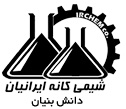Boric Acid Production Method
Boric acid is mainly prepared from borates and minerals. In this way, they react with sulfuric acid and produce boric acid. The largest source of borates in the world is a boron mine in California. Boric acid can be produced by reacting sodium borax with an inorganic acid such as sulfuric acid or hydrochloric acid.
The sodium borax reaction
equation Hydrochloric acid
(chloride acid) This is as follows:
Na2B4O7•10H2O + 2HCl → 4B(OH)3 + 2NaCl + 5H2O
To produce boric acid using sulfuric acid, sodium borohydride first is poured into the reaction tank, and then the dilute sulfuric acid is slowly added until the solution is highly acidified and the pH approaches zero. In this case, a saturated solution of borax or ortho-borate is formed. The hot solution then crystallizes and cools in a vacuum. Boric acid crystals will then be formed. Separate the crystals from the solution and cool the remaining solution until sodium sulfate is obtained as a secondary and secondary product. In the next step, boric acid is recovered by hot water, purified boric acid, ready to be packed and sold.
Na2B4O7•10H2O + H2SO4 → B(OH)3 + Na2SO4 + H2
Na2B4O7•10H2O + H2SO4 → B(OH)3 + Na2SO4 + H2
Contact Us for More Information
